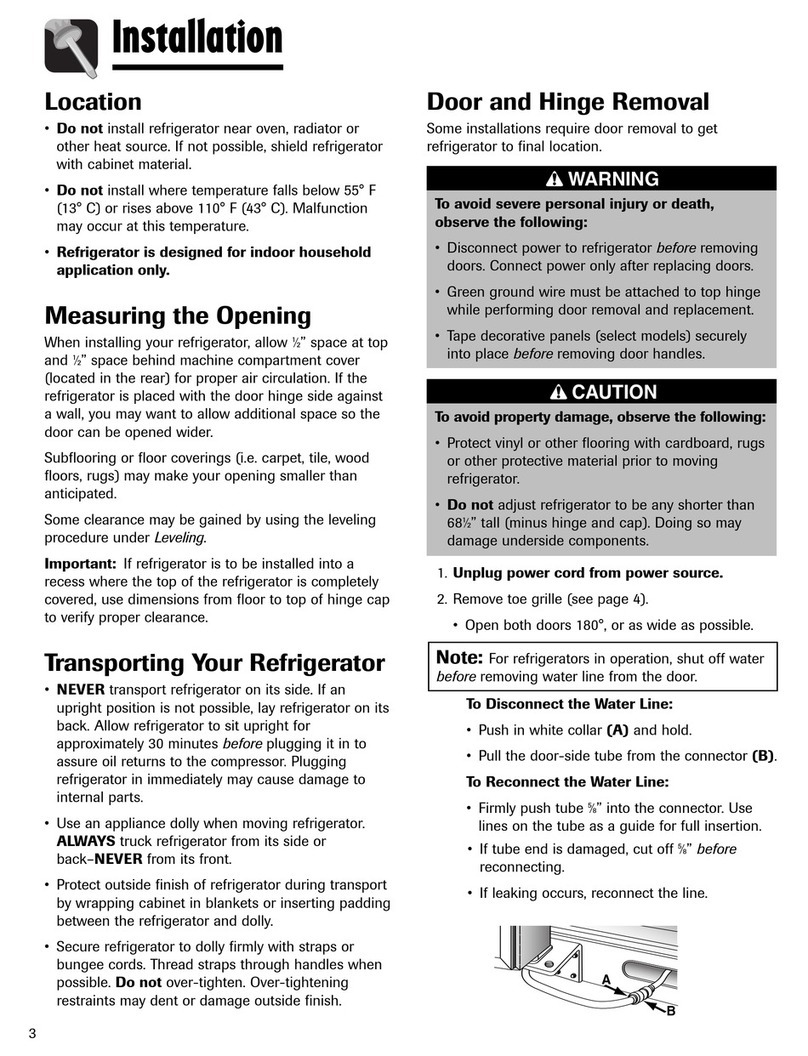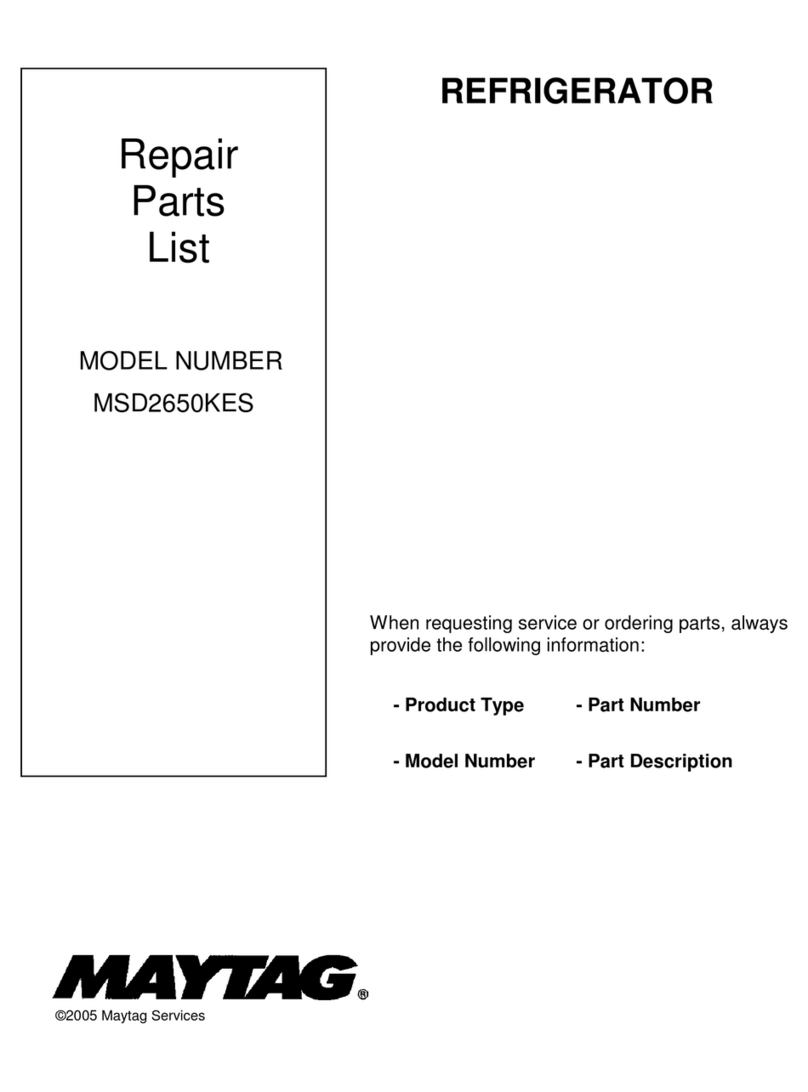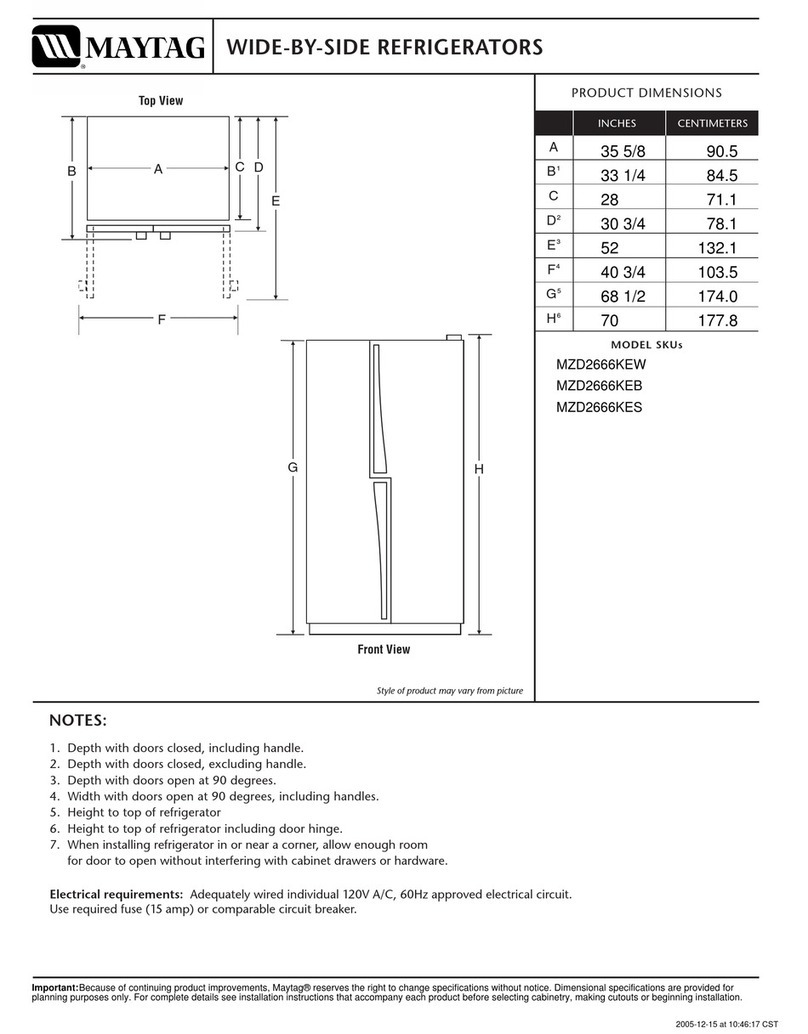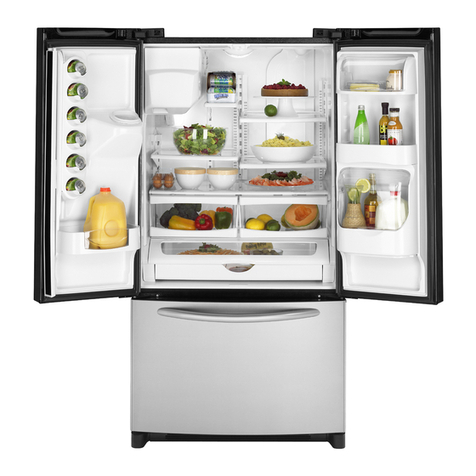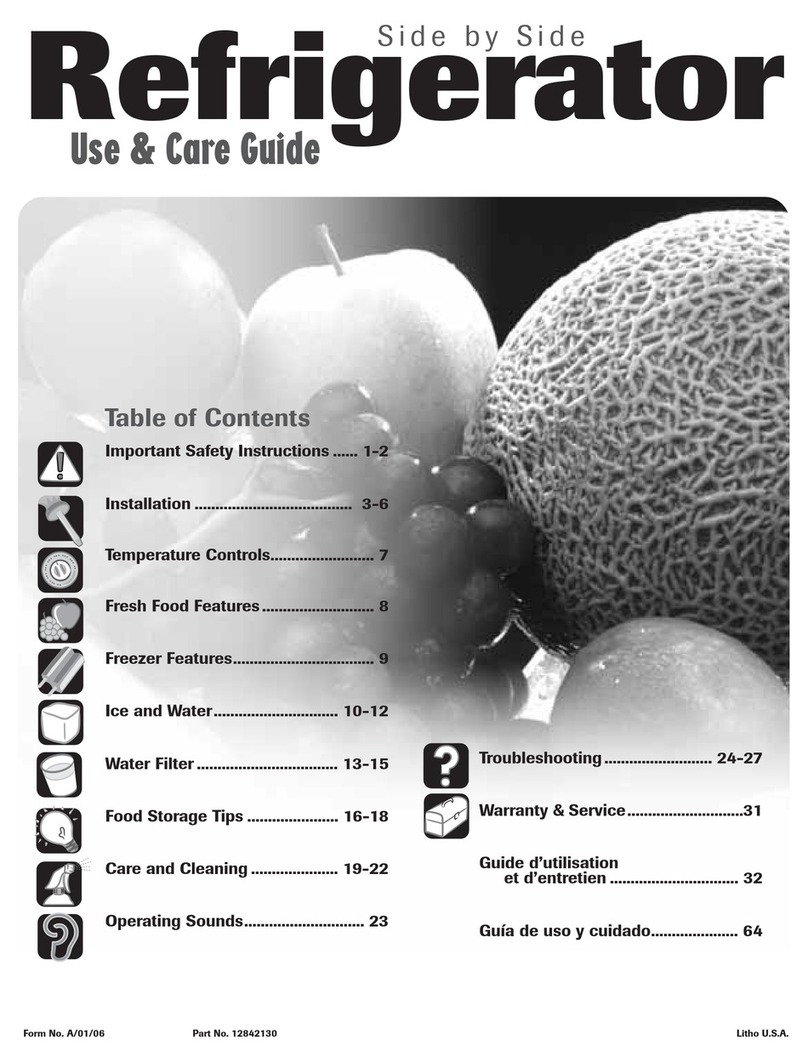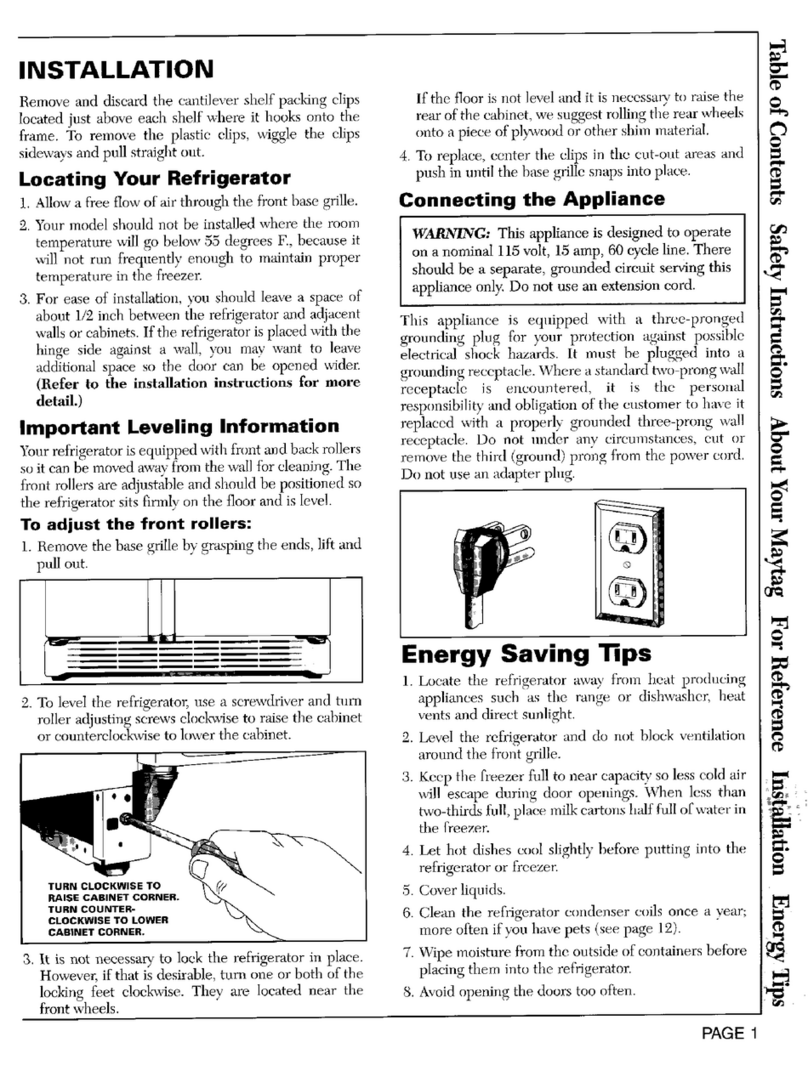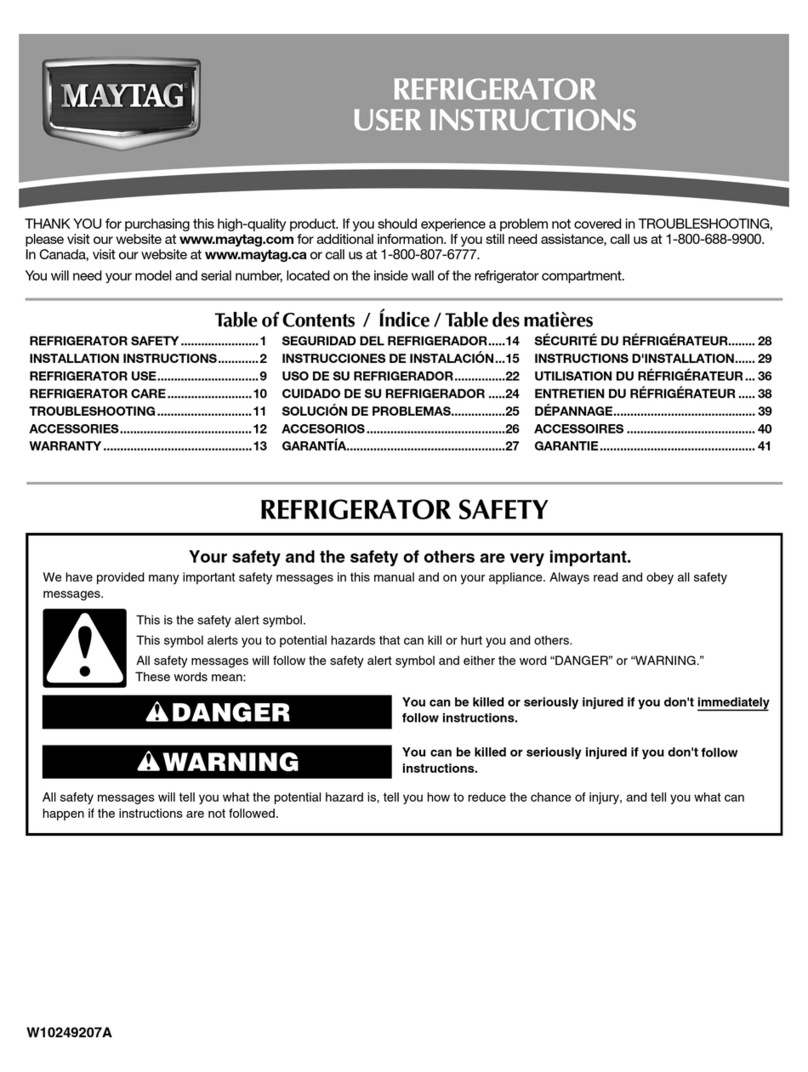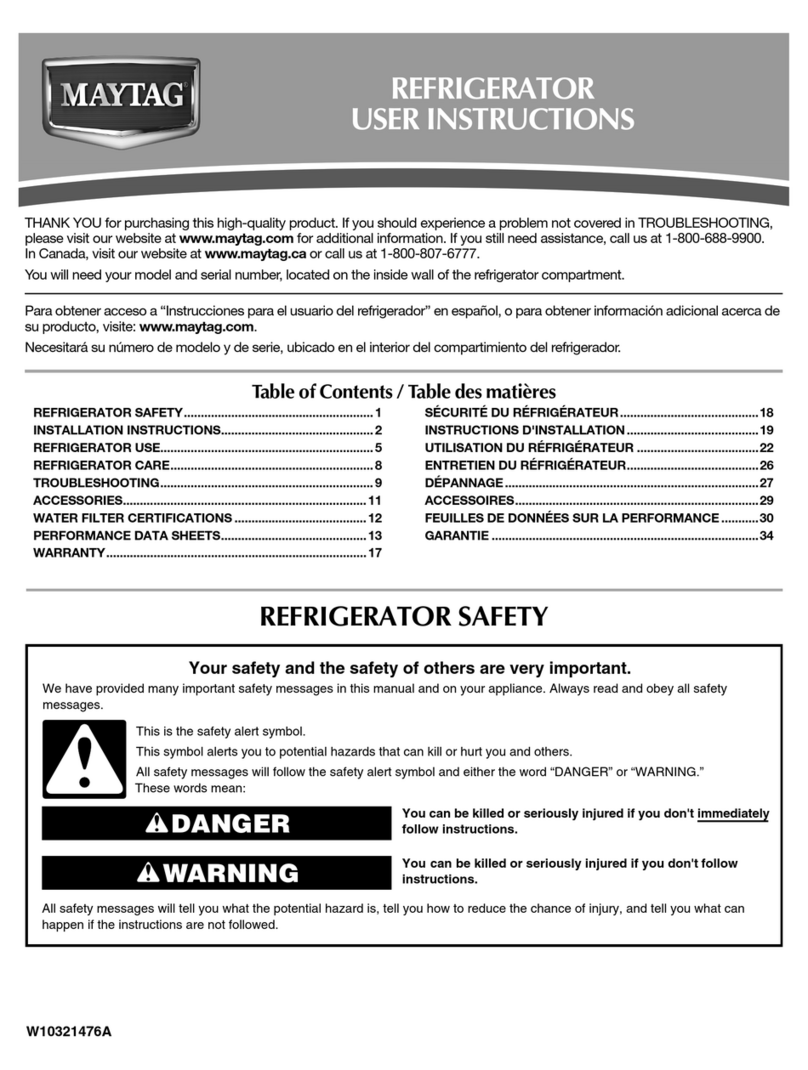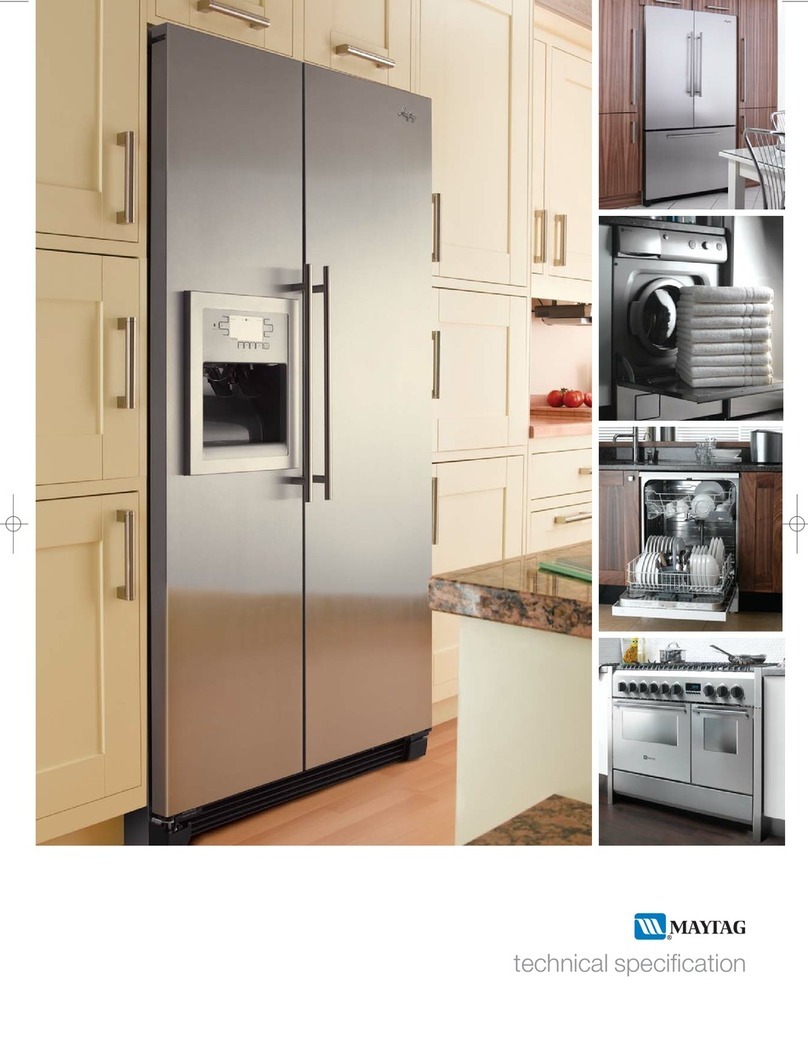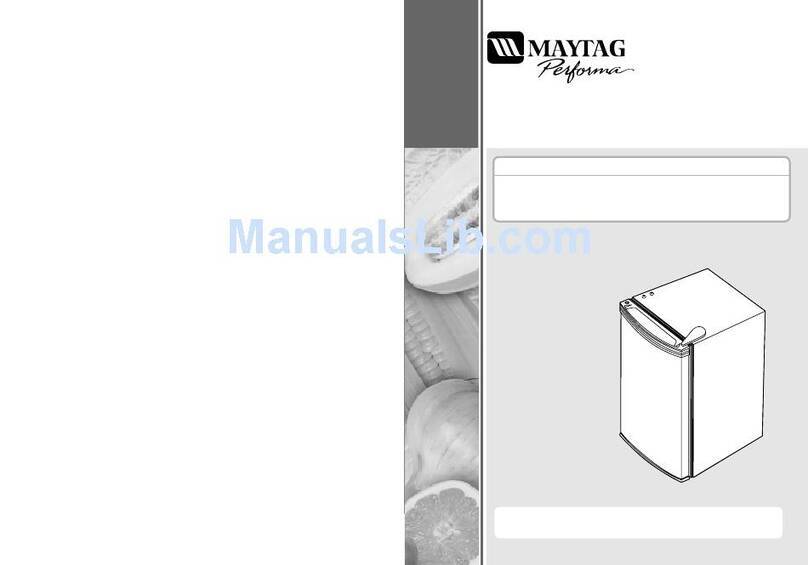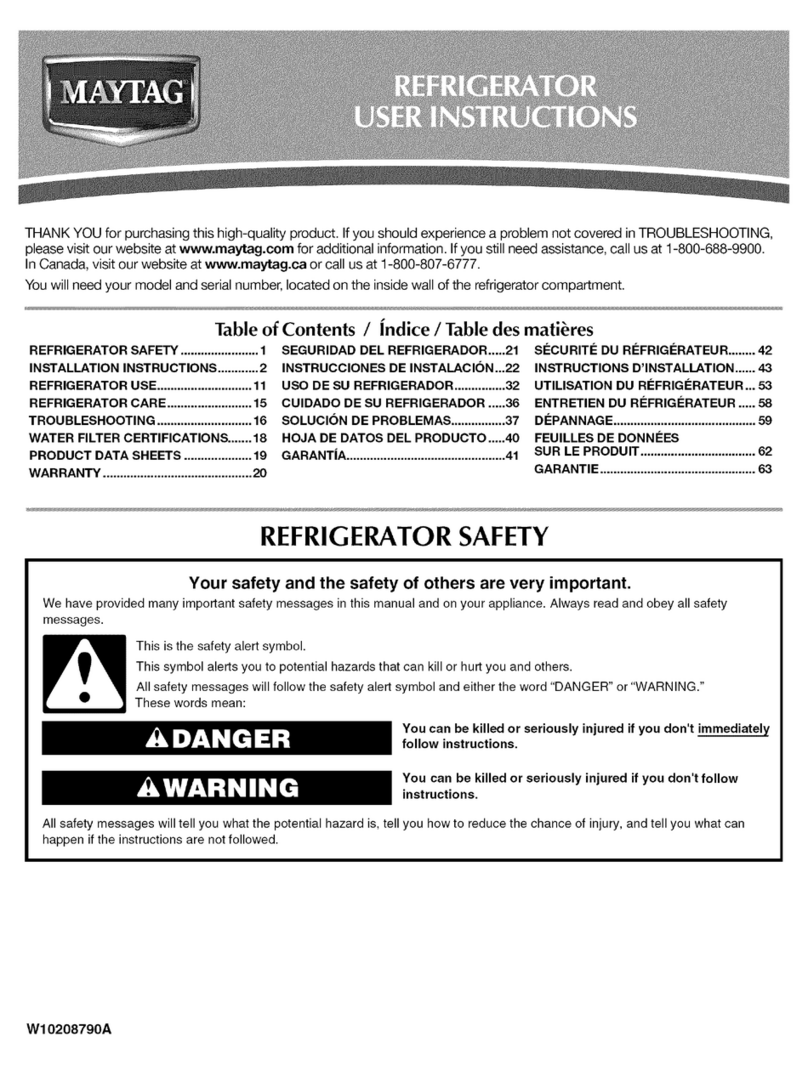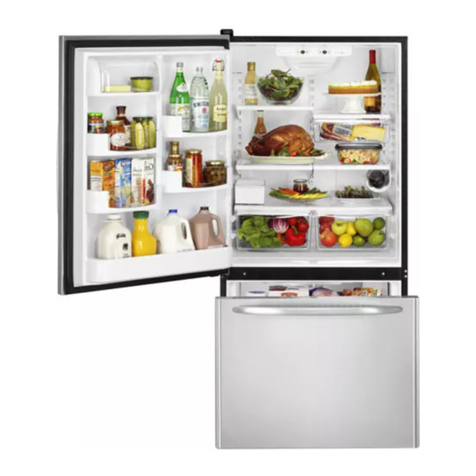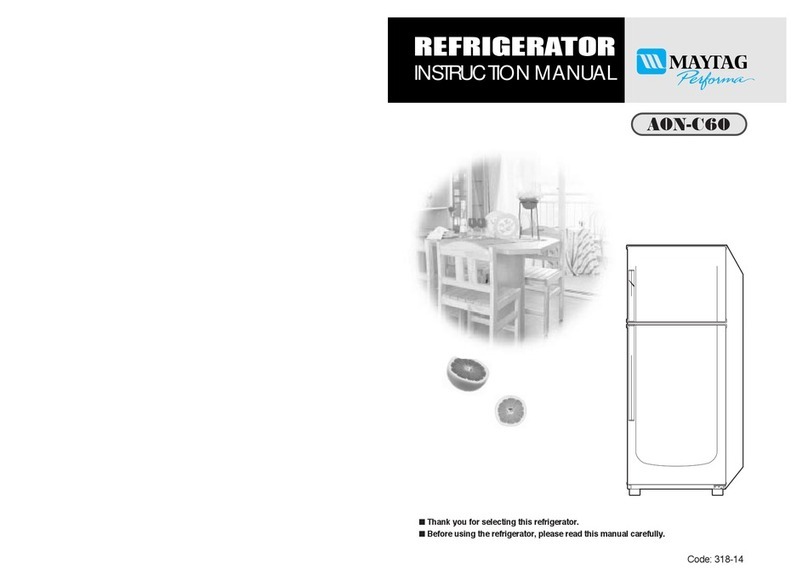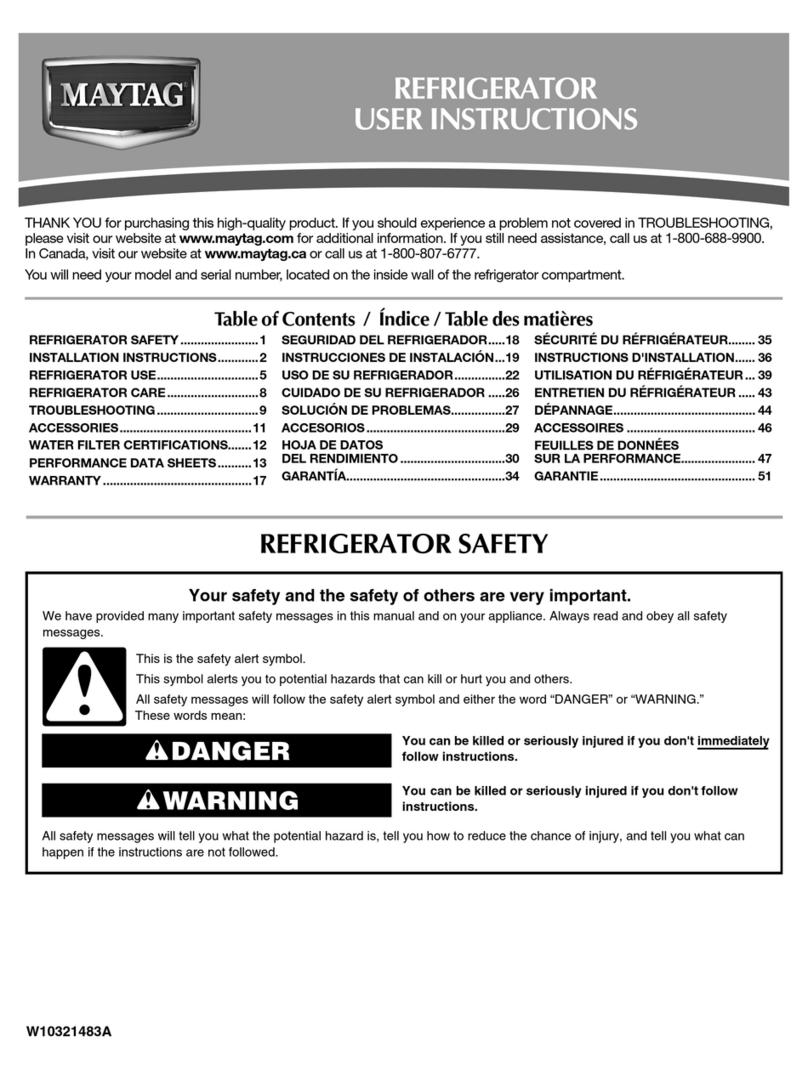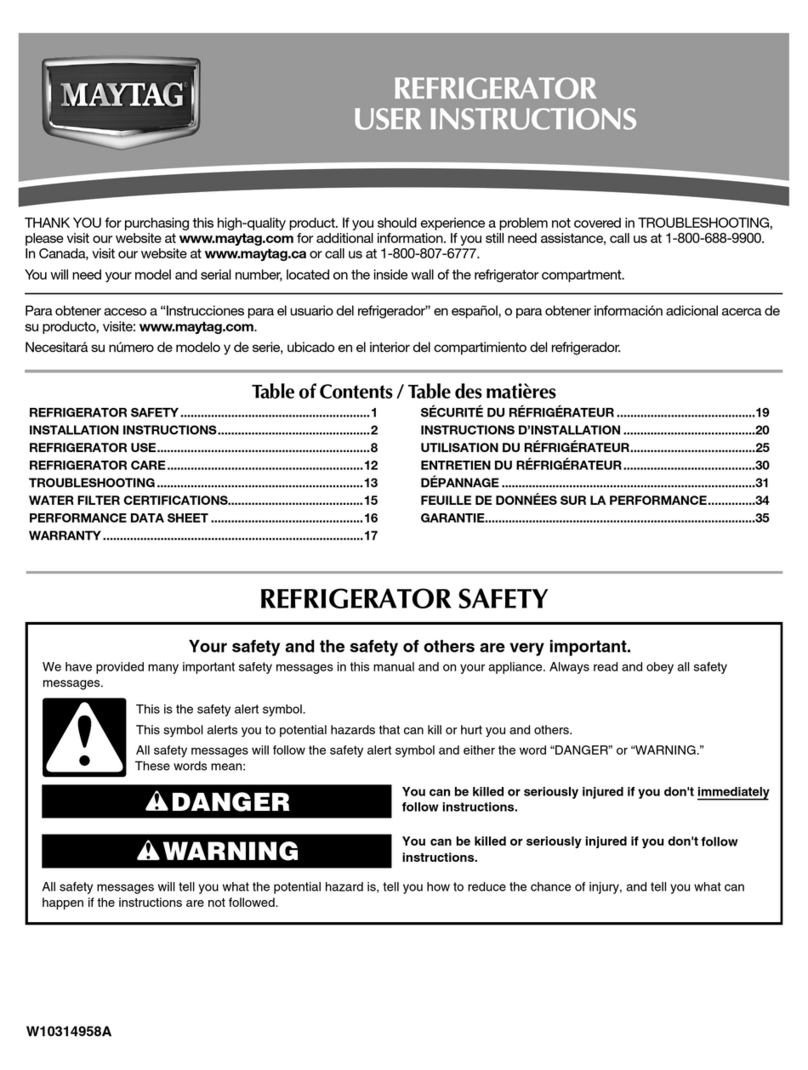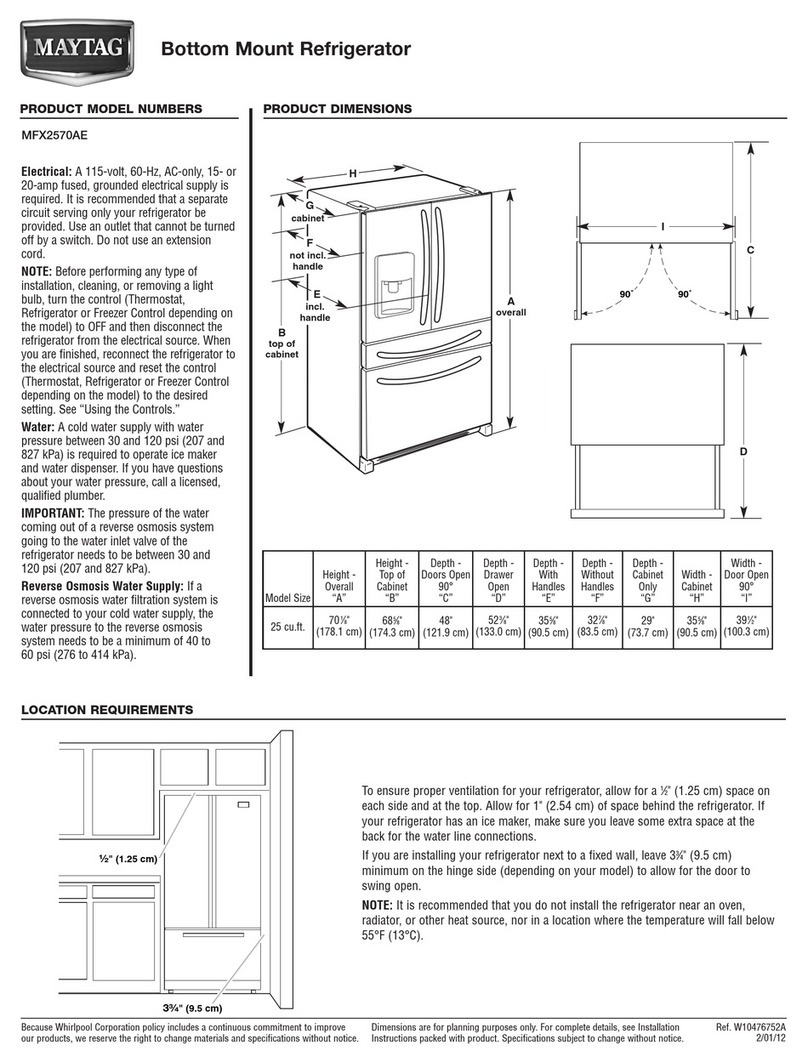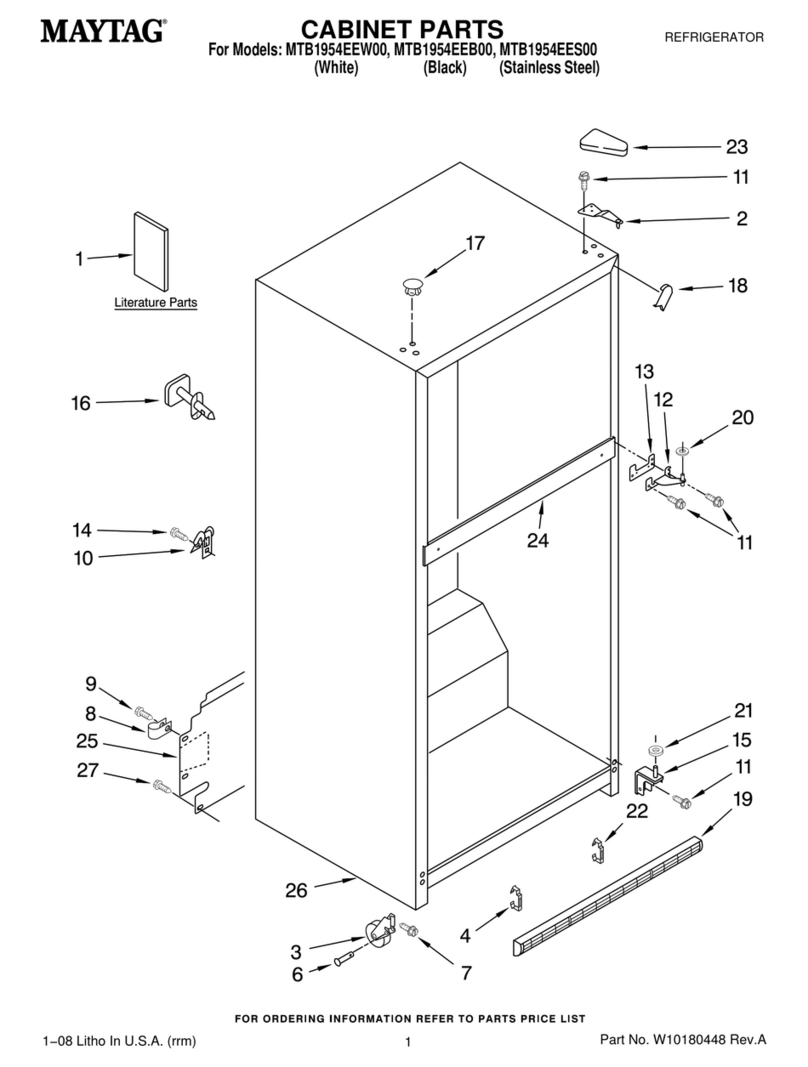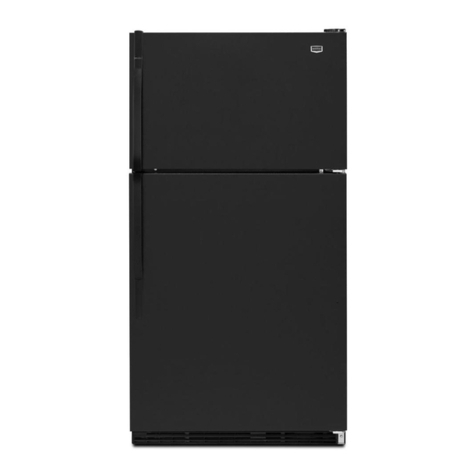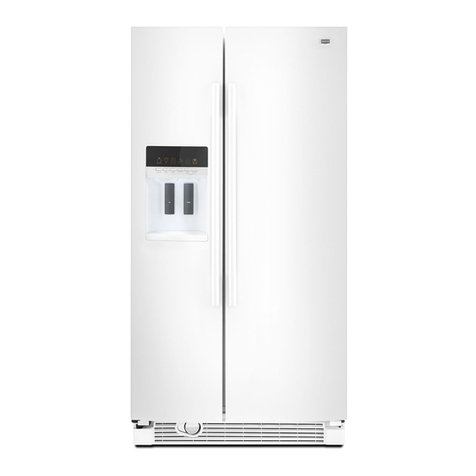
3
Installation
To avoidsevere personal injury or death, observe the
following:
• Disconnect power to refrigerator before removing
doors. Connect power only after replacing doors.
• Green groundwire must be attachedto top hinge
while performing door removal andreplacement.
• Tape decorative panels (select models) securely
into place before removing door handles.
WARNING
To avoidproperty damage, observe the following:
• Protect vinyl or other flooring with cardboard, rugs
or other protective material, prior to moving
refrigerator.
•Do not adjust refrigerator to be any shorter than
681⁄2" tall (minus hinge andcap). Doing so may
damage underside components.
CAUTION
Location
• Do not install refrigerator near oven, radiator or other
heat source. If not possible, shieldrefrigerator with
cabinet material.
• Do not install where temperature falls below 55° F
(13° C) or rises above 110° F (43° C). Malfunction
may occur at this temperature.
•Refrigeratoris designed forindoorhousehold
application only.
Measuringthe Opening
When installing your refrigerator, allow 1⁄2" space at top
and1⁄2" space behindmachine compartment cover
(locatedin the rear) for proper air circulation. If the
refrigerator is placedwith the door hinge side against
a wall, you may want to allow additional space so the
door can be openedwider.
Subflooring or floor coverings (i.e. carpet, tile, wood
floors, rugs) may make your opening smaller than
anticipated.
Some clearance may be gainedby using the leveling
procedure under Leveling.
IMPORTANT: If refrigerator is to be installedinto a
recess where the top of the refrigerator is completely
covered, use dimensions from floor to top of hinge cap
to verify proper clearance.
TransportingYourRefrigerator
•NEVER transport refrigerator on its side. If an
upright position is not possible, lay refrigerator on its
back. Allow refrigerator to sit upright for
approximately 30 minutes before plugging it in to
assure oil returns to the compressor. Plugging
refrigerator in immediately may cause damage to
internal parts.
• Use an appliance dolly when moving refrigerator.
ALWAYS truck refrigerator from its side or
back–NEVER from its front.
• Protect outside finish of refrigerator during transport
by wrapping cabinet in blankets or inserting padding
between the refrigerator anddolly.
• Secure refrigerator to dolly firmly with straps or
bungee cords. Threadstraps through handles when
possible. Do not overtighten. Overtightening
restraints may dent or damage outside finish.
Doorand Hinge Removal
Some installations require door removal to get
refrigerator to final location.
1. Unplugpowercord from powersource.
2. Remove toe grille andbottom bracket covers (see
page 6).
• Open both doors 180°, or as wide as possible.
Forice and waterdispensingmodels only:
Remove the left side bracket cover by carefully
pulling the water line to pry the cover loose. Then
continue to maintain downwardpressure to the
notchedside of the cover while swinging it off
(see page 6).
To Disconnect the WaterLine:
• Push in white collar (A) andhold.
• Pull the door-side tube from the connector (B).
To Reconnect the WaterLine:
• Firmly push tube 5⁄8" into the connector. Use
lines on the tube as a guide for full insertion.
Note
• For refrigerators in operation, shut off water before
removing water line from the door.
